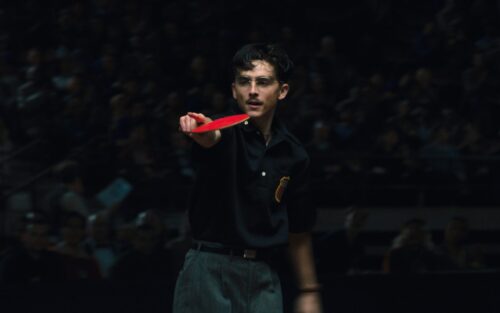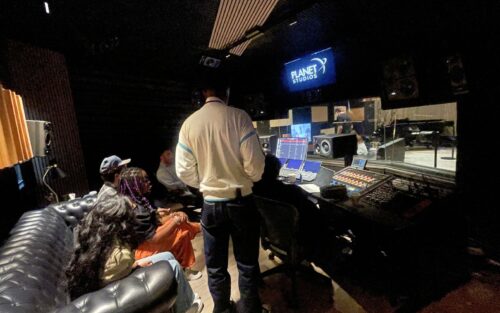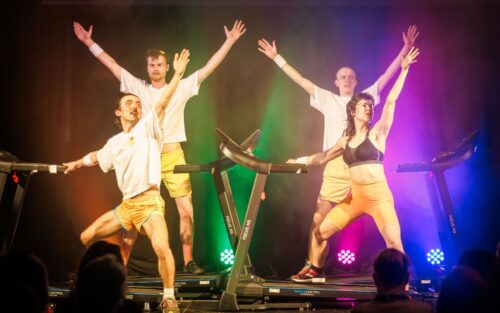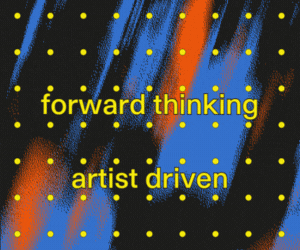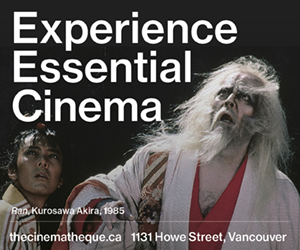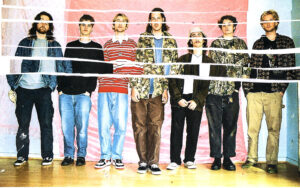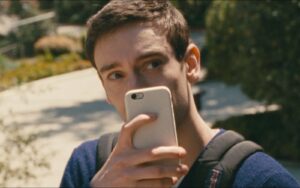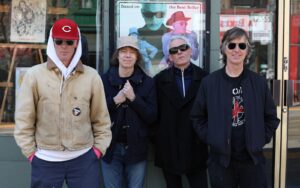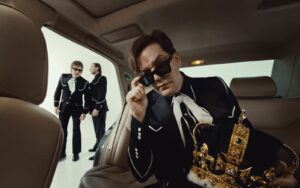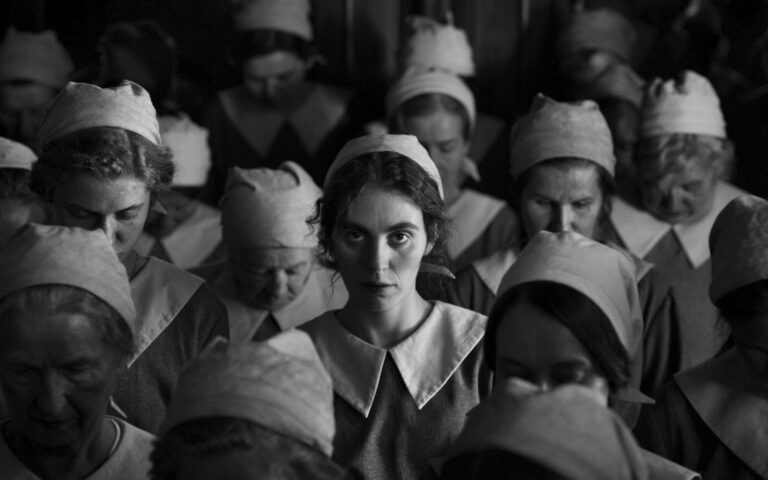
The Girl with the Needle: Inside Magnus von Horn’s Expressionistic Nightmare
The director shares his take on how German expressionism, Burial, and the cyclical nature of time informed his twisted adult fairytale.
by Prabhjot Bains
- Published on
For Swedish-Polish filmmaker Magnus von Horn, the style is the substance. Armed with expressionistic camerawork and an ethereal, monochromatic palette, his first Danish-language feature, The Girl with the Needle, seamlessly transports audiences to a squalid and nightmarish Copenhagen set 100 years in the past. The true horror, though, lies in how its vivid grotesqueries seep into the present with an uncomfortable prescience. Across each meticulously crafted frame, von Horn’s blend of true crime and cinematic homage unfurls as an adult fairytale that, at once, feels uncanny and real—rife with the sort of uncomfortable truths we desperately hope are the stuff of make-believe.
Loosely based on the true story of one of Denmark’s most infamous serial killers, The Girl with the Needle follows Karoline (Vic Carmen Sonne), a young seamstress trying to survive on her own in post-WWI Copenhagen after her husband, Peter (Besir Zeciri), is declared missing in action. Luck finds her when she fosters a romantic connection with the wealthy Jørgen (Joachim Fjelstrup), the owner of the textile factory where she works. Yet, her fortune is short-lived when their relationship isn’t permitted to continue, leaving her abandoned and pregnant. Her troubles lead her to Dagmar (Trine Dyrholm), a candy shop owner who offers to relocate unwanted infants for desperate women. Their chance encounter fosters a relationship that quickly goes into dark, dreary territory that sheds light on where these children are truly placed.
While modern black-and-white cinematography can often feel like a gimmick or a stylistic crutch, it actively informs the story in von Horn’s hands. In fact, for von Horn, it is the story. He tells RANGE that The Girl with the Needle “felt like a story pretty early on that is justified to be in black and white.” The sentiment rings true in the film’s startling first frames—an abstract montage of distorted female faces amid a pitch-black void. “We thought about it as a fairytale for grownups; the black and white helps to create that atmosphere.”
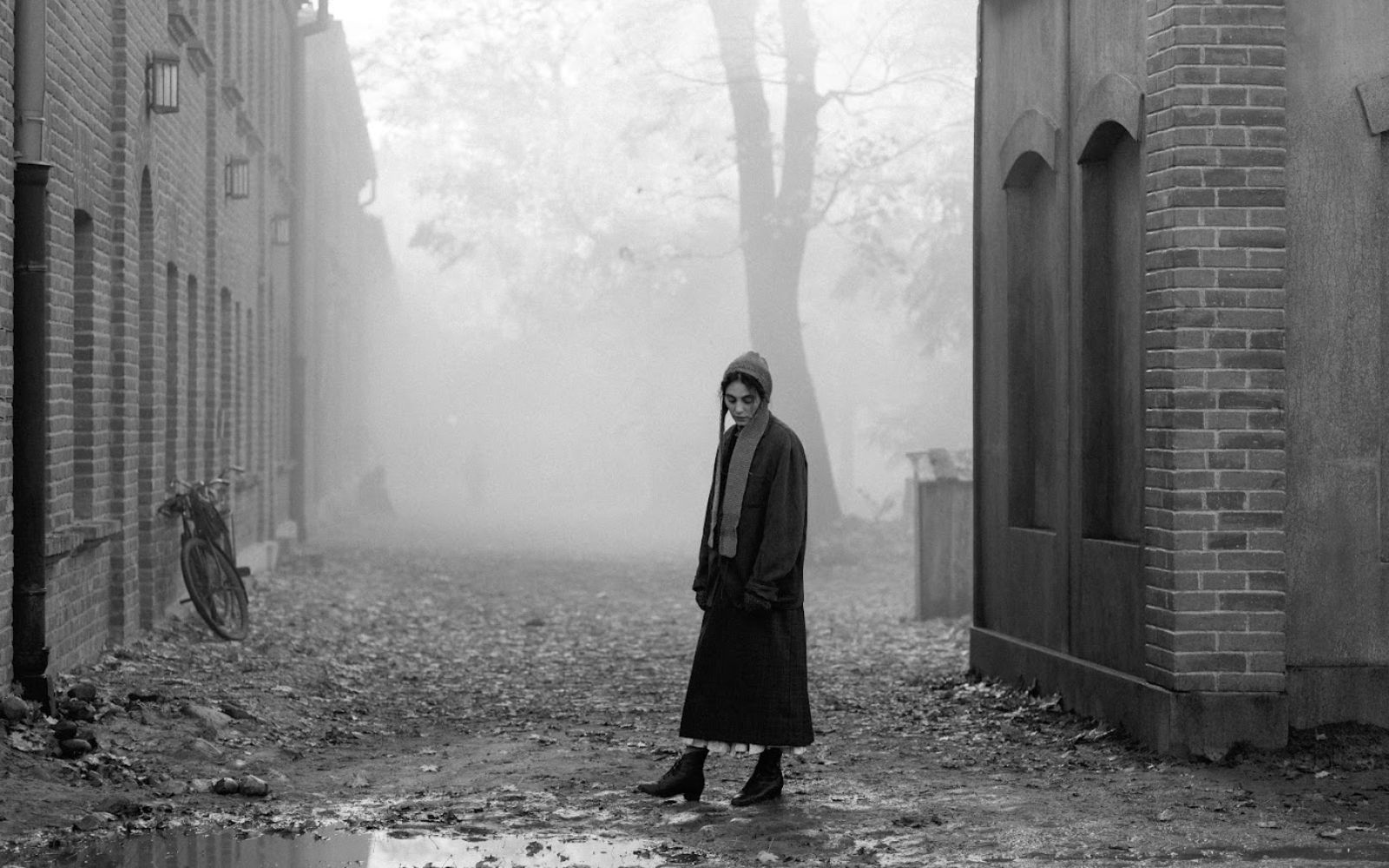
Yet, the starkly beautiful style and the historical setting offer little remove from the current horrors facing women who exist on the fringes of society. “For the audience, it should feel like they are watching from a distance, and slowly they get more and more drawn in and realize this world that felt so far away is actually close,” von Horn says. “We wanted to take the audience on a time travel back to Copenhagen over 100 years ago, but into the idea of the world – not necessarily how it really looked, but the way we imagine that world today.”
To conjure that effect, von Horn based “the format of the film on photography at the time,” and principally, German expressionism. He adds “We used famous references that are not necessarily from the film’s setting of 1919,” noting the influence of cinematic pioneers like the Lumière brothers and famed German expressionist F.W Murnau, along with Todd Browning’s Freaks (1932), David Lynch’s Elephant Man (1980) and, especially, Steven Spielberg’s Schindler’s List (1993), who he notes “is on the top for black and white cinematography and staging.” In addition to this laundry list of cinematic touchstones, von Horn adds the film is deeply “inspired by the analog process” itself. “We built and used a lot of miniatures…so everything comes together to take audiences on this time travel,” he says.
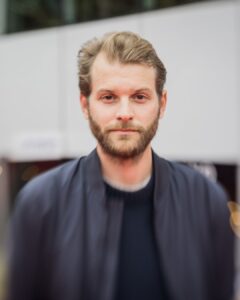
Director Magnus von Horn.
The performances that inhabit this dreary world assume a similar timbre, basking in the theatricality of the period while retaining a profound sense of relatability. Von Horn says that actresses of the time were the inspiration for the leading parts. “For Vic, we were looking everywhere from Asta Nielsen” – a famous silent-era Danish actress – “who kind of looked like her, to even Charlie Chaplin for the body language.” He amusingly notes “I pitched her because she looks like someone who worked at a factory over 100 years ago and other actresses look too healthy — which says some good things about Denmark, no?” When it came to Dyrholm, who von Horn insists “is the best actress working in Denmark today,” he asked her to infuse Dagmar with The Exorcist’s Regan and Willem Dafoe’s insane watchman in The Lighthouse, fostering a villain both charismatic and deranged.
While The Girl with the Needle goes to great lengths to evoke a mystical idea of the past, it feels especially attuned to the present — a feeling most apparent in its amorphous, electronic sound design. “When developing the film, I was always listening to electronic music,” von Horn says. “I knew that I wanted a score that was not from the time, not based on classical instruments.” When asked about which specific artist he latched onto during the creative process, he answered, with emphatic succinctness: “Burial.” “I’m a big Burial fan, and it is music that I continuously listen to that starts becoming images for me when I write… that choice of music from the beginning sets the rhythm for my writing, and it becomes magical,” he says.
To conjure that droning soundscape, von Horn tapped experimental electronic musician Frederikke Hoffmeier (who performs under the stage name Puce Mary). “She’s not a film composer, she’s a musician who performs live with her machines and it makes for a collaboration that’s different from a classical approach… and is as far away as you can get from the film’s time period,” he says. “That clash makes the film modern, makes us search for different meanings.”
That sense of modernity reverberates at the heart of The Girl with the Needle. “It’s a film about an oppressive society and how long it takes before we become the oppressors,” von Horn adds. “I live in Poland where some of the harshest abortion laws were introduced in 2020… It’s politics that I don’t understand how they can be reintroduced into society. In this way, if we can make connections between this film and our current society, it says a lot. I hope this film can take the temperature of where audiences are living.”
Sobering reflections like these allow The Girl with the Needle to linger and fester long after it fades from the screen. While von Horn admits the film takes liberties with the actual case it’s based on, it speaks to what he calls a “greater emotional truth.” He adds “When it comes to the mechanism of society and one person in it, the film is true.” In a world that seems to be taking more steps backwards than forwards, and where bodily autonomy is increasingly at risk, “the hardcore version of life” it presents doesn’t seem as distant as it is. More importantly, however, von Horn makes us understand that, in such a horrible world, the heinous choice is sometimes the only kind one.
The Girl with the Needle is now streaming on MUBI
Click here to get 30 days free!
By Glenn Alderson
A deep-listening session reveals how Apple Music’s sonic innovation reshapes the way we hear.
By Cam Delisle
Dominic Weintraub and Hugo Williams take audiences on a treadmill-fueled ride through the chaos and hope of modern life.

